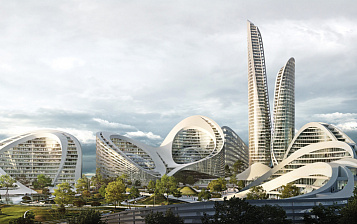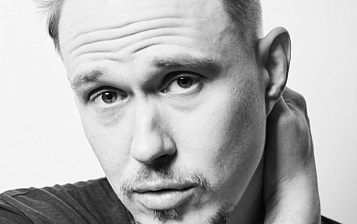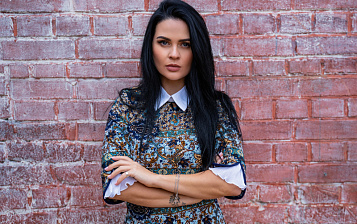The last lifetime project of the great Zaha Hadid. How the Sbera Technopark is being built in Skolkovo – and will it change the essence of the “science city” 10 years after its foundation.
In October 2020, President Putin congratulated Skolkovo on its 10th anniversary, noting that the budget already receives more than 2 billion rubles in tax deductions per year from its residents, and the developments of the first post-Soviet science city are being used to combat the consequences of the coronavirus. Viktor Vekselberg, who oversaw the project all these years, as if anticipating flattering and not very comments, shortly before the anniversary, said that, of course, it would not be possible for Skoltech to become Silicon Valley, but this is not the essence of the project. According to the entrepreneur, our path is a symbiosis of the best innovative practices of Singapore, France, Germany and Israel, and the proof of success will be the imminent launch of the Skolkovo Technopark, which in the 2020s should become the largest technopark in Europe, when R&D centers (huge scientific centers and "research and development" laboratories) of Yandex, Sibur, TMK, Tatneft, Boeing (USA), Fanuc (Japan) and, of course, Sberbank. It is the technopark of the latter - "Sbera", as they say now - that is designed to change the essence of Innopolis and give a new impetus to Skolkovo at a new stage of its existence, including the power of innovative architectural concepts. Maxim Kirsanov, special correspondent of Gorproekt magazine, together with specialists from PromStroyKontrakt Group of Companies visited the construction site of Zaha Hadid's last lifetime work, spread over an area of almost 300,000 m2, to see how the modern Russian construction industry is able to embody the most innovative ideas of architectural postmodernity.
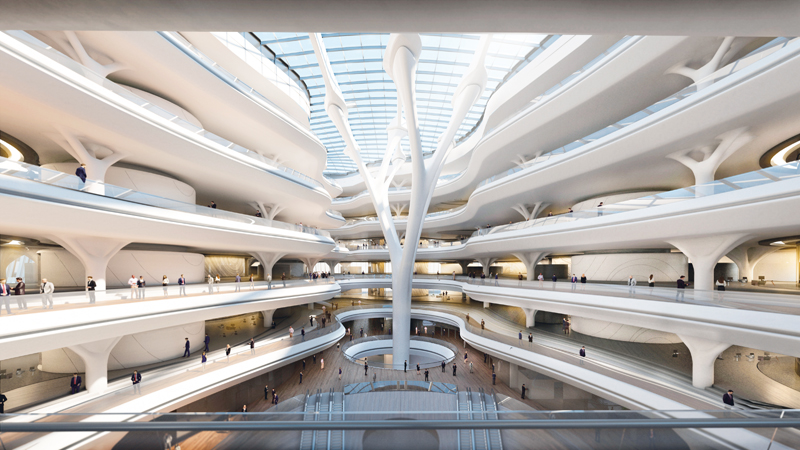
Difficult road of modern architecture to Russia
Despite the successful reconstruction projects of the Soviet heritage (see "Garage" designed by Rem Koolhaas or the VDNKh space), numerous parks and skyscrapers, few really noticeable architectural masterpieces have emerged in the capital over the past decade, according to the recognition of the city's chief architect Sergey Kuznetsov.
A typical example: the first large facility designed by Norman Foster, with the ghosts of a high-tech “cucumber” that has been scaring Muscovites since the time of Luzhkov, appeared in Russia only in the fall of 2020, when a new office of the Russian Copper Company opened in Yekaterinburg. It was Foster, the co-designer of the Apple Park headquarters in Cupertino (see Gorproekt 2017), who was Zaha Hadid's main competitor in the competition for the Sberbank project. The chairman of the board of the largest domestic bank, German Gref, who has long “tried on the turtleneck” of Steve Jobs and his presentation style, openly sympathized with Foster's workshop, which had already made the Mriya Hotel in Crimea for Sberbank. However, the stars aligned, and the sudden death of Zaha Hadid caused a public outcry that even the high jury could not resist. As German Oskarovich admitted, thousands of interviewed employees of Sberbank supported the implementation of the last full lifetime project of the great Anglo-Iranian, which was completed under her leadership 4 days before a heart attack. From now on, all the projects of the classic of postmodern deconstruction of architecture and biomorphism will be divided into those that she found in her short life and those that she will never see. Among the latest: the world's largest Duxing Airport in Beijing in the form of a phoenix bird, the first fully residential skyscraper in the United States in Miami, the largest single-pylon cable-stayed bridge in Taipei, and much more - from Manhattan to the Klenovy Boulevard metro station in Moscow and the Doronin villa for Naomi Campbell in Barvikha.

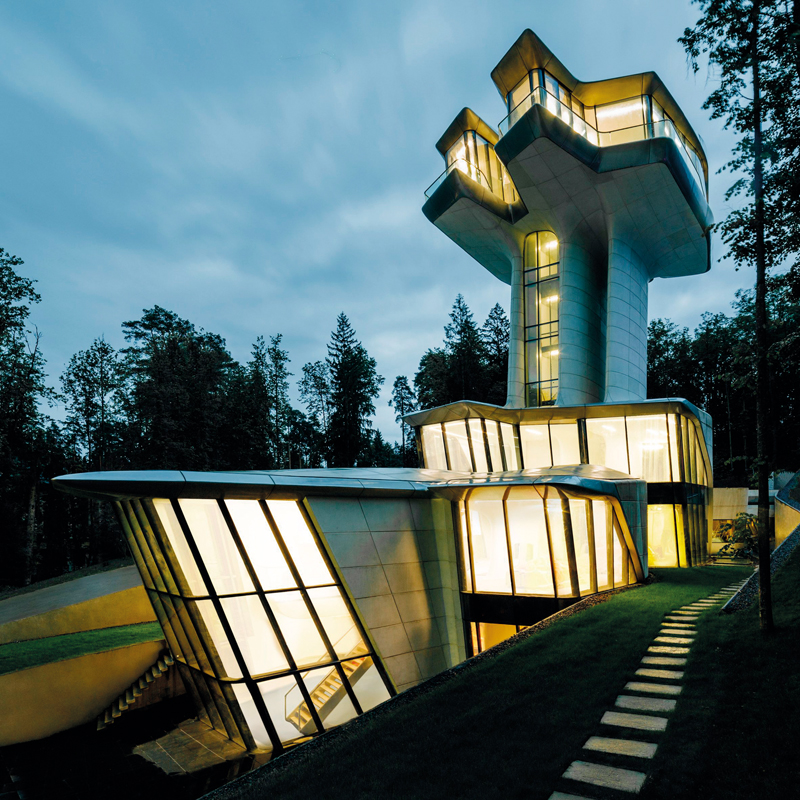
All this Zaha, whose active work took only 21 years (even less than that of another sprinter - Shakespeare exactly 400 years before her), will no longer see and the watershed point here will be a giant complex for Sberbank. How symbolic this object is and embodies everything that the “queen of crooked lines” developed (as the Guardian aptly puts it). Will it be more Sagrada Familia after Gaudí's death or Moscow skyscrapers after Stalin's death? Let's try to figure it out.
What makes up an architectural masterpiece
Few people know that following Leonardo da Vinci, Zaha Hadid developed her love for mathematics (her first education), modeling, precision engineering and drawing all her life. Experts note that starting from her graduation project (in which she proposed to make a Suprematist bridge based on the painting of sculptures-architects K.S. Malevich), Zakha united the legacy of the Soviet avant-garde, abstract drawing techniques, the theory of form, line and color of V.V. Kandinsky and El Lissitzky, which, thanks to its oriental roots, are intertwined with motifs of desert dunes, Arabic calligraphy and an absolutely modern ecological view of the environment, where architecture has the right to “break” historical buildings, but must treat nature as carefully as possible, ensuring its “sustainability” and mutual synergy of nature and man.
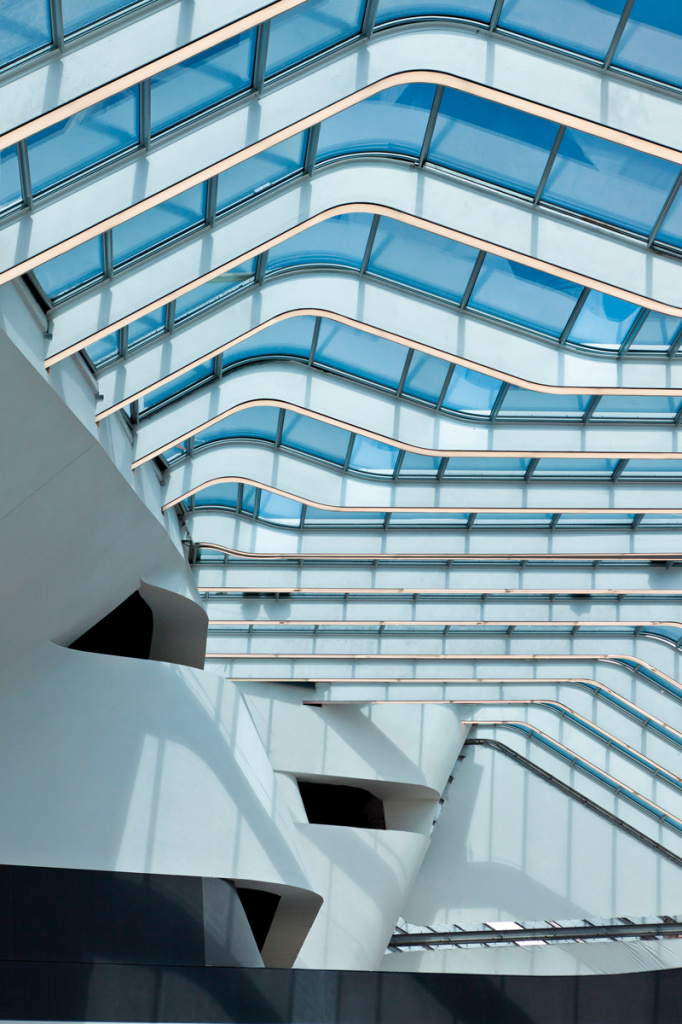
Zaha Hadid's library has preserved thousands of calligraphic sketches, numerous dashed lines, which then determined the directions of the main volumes of future buildings. The same drawings formed the basis for the layout of curvilinear steel beams (which the architect loved so much - it’s not for nothing that her surname Hadid (ديدح) means “iron” in Arabic) and created the pattern of the upper glazed ceilings, so fascinating to contemporaries. But the main thing is that Zaha did not draw a building, but the whole space, which only merges into one in her sketches. In the silhouette of the buildings, the drawings of the streets around are often guessed, "flowing" into the volumes of the final structure. By integrating architecture and the natural landscape, the effect of expanding the building into the landscape is achieved (in Skolkovo, the surrounding forest flows into the trees inside the building). Sometimes the curvature of the form in Zaha’s projects repeated the outlines of the coastline, and in the case of the Sberbank Technopark, smoothly merging with the surrounding land, it was the typical hilly area of Skolkovo, still dotted with forests, ponds and other signs of classical Central Russian nature, which so inspired our painters. We are used to look down on our idyllic landscapes, but they can bewitch, and for the biography of Zaha Hadid, they also mean something, because it was in Russia that she, the first woman in history, received the Pritzker Prize.
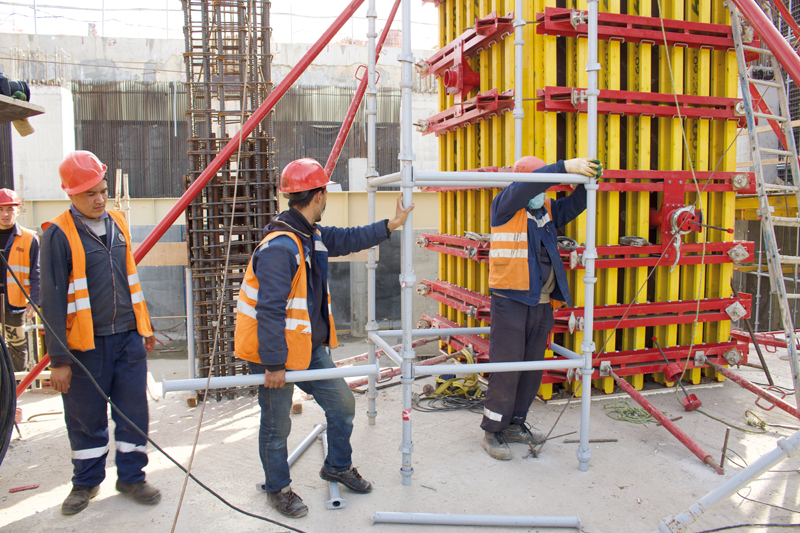
In general, each subsequent large project reflected many elements of the biography of its author (and not at all a love for Soviet modernity and art nouveau, as detractors assumed after the construction of the Heydar Aliyev Center in Baku. The Technopark, as befits the final creation, gathered especially a lot. Here and luxurious the scale of her projects for Arab sheikhs, especially the subway in Riyadh, gigantism and giant-like structures in the spirit of Dusin Airport in Beijing, the functionality of her European projects - railway stations in Naples and Strasbourg, museums and community centers in Glasgow and Wolfsburg (think tank – Volkswagen) An unexpectedly sharp corner in the center of the main building of the Technopark resembles the symbol of the Hong Kong Polytechnic University created by Zaha - the 15-story “Innovation Tower”, built according to her project in 2013 and also designed to spur the creativity of everyone around. thoroughly bent and warped, turning it into something like tendons or mushrooms inside the building, trying to create the effect of reverse perspective characteristic of its deconstructive style. Forms freely flowing one into another and a complex interweaving of elements, reminiscent of either hookah smoke arabesques or a frozen psychedelic installation, simultaneously excite the imagination of those inside and calm them down, having a clear stress-reducing effect. Like admiring nature.
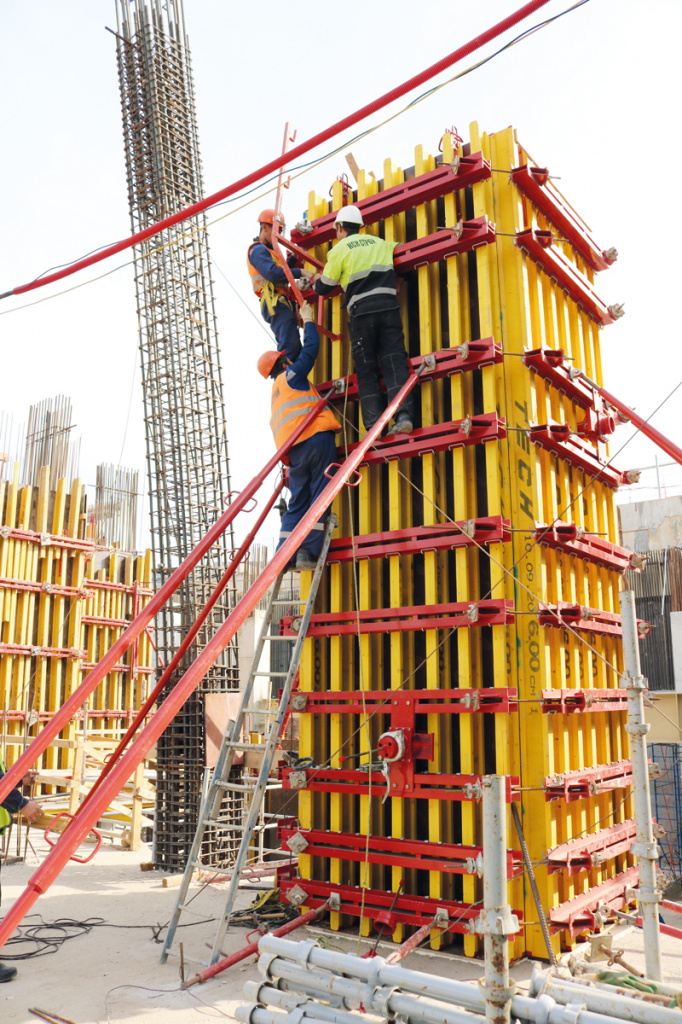
But as modern science knows, “the art of inspiration” is also a science.
While Zaha Hadid was developing as an architect of paintings, since the late 90s, a permanent member of her team, Patrick Schumacher, has been actively introducing computer modeling into her projects, analyzing Big Data (for example, the dynamics of movement, the flow of people around and inside buildings) and allowing to make the engineering part no less advanced than artistic. It was Schumacher who, singing the praises of his boss, proclaimed the appearance of the “parametrism” style. Within this idea, the complex seamlessness, fluidity, and flexibility of Zaha Hadid's architectural space were pierced by mathematical models of the pragmatic use of space that went beyond Euclidean geometry. According to Schumacher and his teacher, the philosopher Niklas Luhmann, an architectural system can influence social interactions and, like "autopoiesis" in biology, reproduce sustainable practices. So the Technopark in Skolkovo is carefully designed for constant brainstorming in small groups of 4-5 people, who at any time can switch to teamwork in groups of 100 people or even more. For all tasks - from privacy to noisy open spaces, the new building has its own spaces. But unlike the Soviet institutions of the past (which also, it would seem, had "audiences", assembly halls, rooms for sports and recreation, and libraries - which are not analogues of the current co-working spaces, spas and fitness centers provided for in Sberbank), all the spaces of the Technopark are deliberately unstable and easily change their configuration. The purpose of the space is to help 12-15 thousand people (that is, the whole city!) Create comfortably and constantly find new ideas, communicating with smart colleagues from various departments, moving freely, admiring nature. As we can see, the main goal of Zaha Hadid's architecture is extremely pragmatic - to help the most creative employees of Sberbank coexist and love their work. And the ultimate goal, of course, is to prevent the first post-Soviet science city of Skolkovo from joining the sad ranks of its Soviet colleagues: Obninsk, Korolev, Michurinsk, Reutov, Fryazino, Pushchino, Biysk, Troitsk and many others. These are all good cities with interesting places to work (an example of this is the MIPT technopark in Dubna, recently built with the help of PSK technologies). But first of all, these are just Russian “cities” with a bunch of their own problems, disorder, car services and other signs of a depressive era. And if the ideas of the Zaha Hadid team turn out to be true, the computer-calculated “clumps of energy of architecture” and “phytodesign” give their chain reaction, then Skolkovo will be able to avoid this fate and not become just a city, but the driver of the whole country, where the most creative Russians will strive.
How to build an architectural masterpiece
But for everything to work as the architect intended, everything must be built in the same way, which is not easy, as the controversial example of the Dominion Tower on the face of Sharikopodshipnikovskaya in Moscow showed. In contrast to Foster's simpler designs, which require a maximum of smooth architectural concrete (as in the Yekaterinburg project described above), curved lines of internal columns, fluidity of the facade, large-scale glazing with a minimum of supports, huge light atriums and biomorphic structures are all key features of Zaha's architectural style. , connected in the Technopark, required non-standard formwork. At the same time, the short construction time (which is expected to be completed in 2022) and the cost-effectiveness of the budget excluded the creation, for example, of unique steel formwork for each element - there were too many of them! “We had to create something as unusual as possible with standard tools, literally from plywood, nails and I-beams,” says Alexander Medvedev, lead engineer, supervisor of the PSK Group of Companies, with whom we are walking through the endless labyrinth of the future complex.
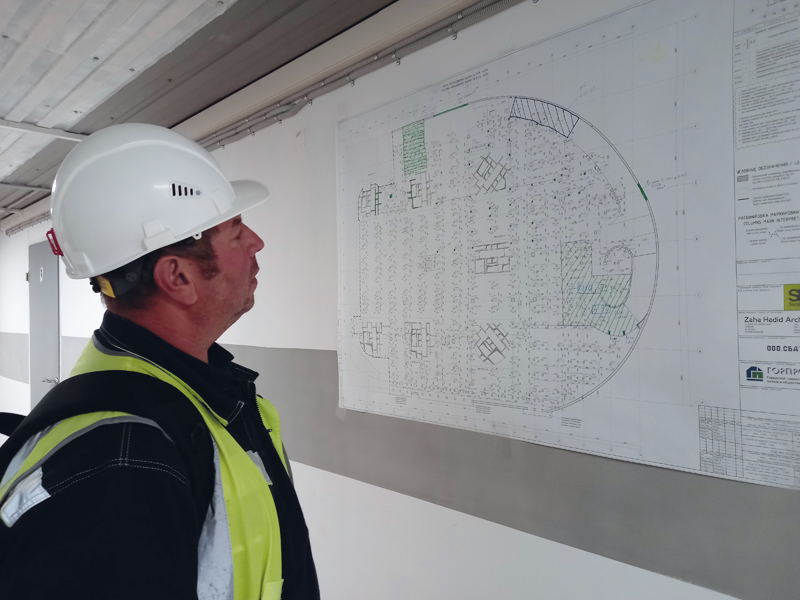
In the autumn of 2020, the underground floors of all three blocks are being built, but all the signs of Zaha Hadid's style are already visible - a banal parking lot has been turned into a smoothly swirling shell. To create very smoothly curving tens and hundreds of meters of concrete walls, the PSK-Classik radius beam-and-beam formwork on hinged crossbars was used, thanks to which it was possible to adjust the degree of bending as accurately as possible.
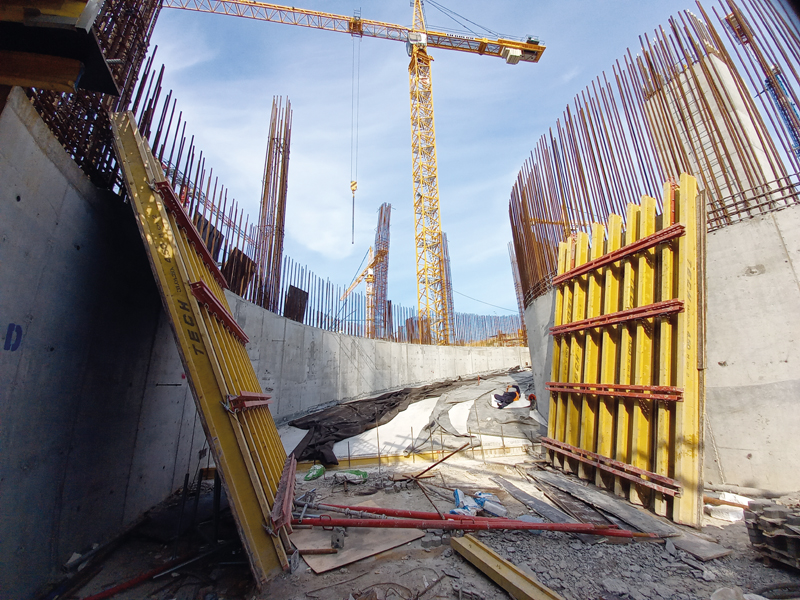
Due to the abundance of characteristic red power crossbars and a yellow TECH beam from the EcoStroyProject plant near Moscow, the entire construction site looks like a whirlpool of autumn colors: a boiling yellow-scarlet ocean. The initial parts of future giant columns are already being erected (the largest in the central atrium will be over 50 meters). In the underground part, the height also often exceeds 10 meters. In order for the columns to be as strong as possible, the technology of simultaneous supply of concrete into the mold from several sides using a special multi-beam formwork is used.
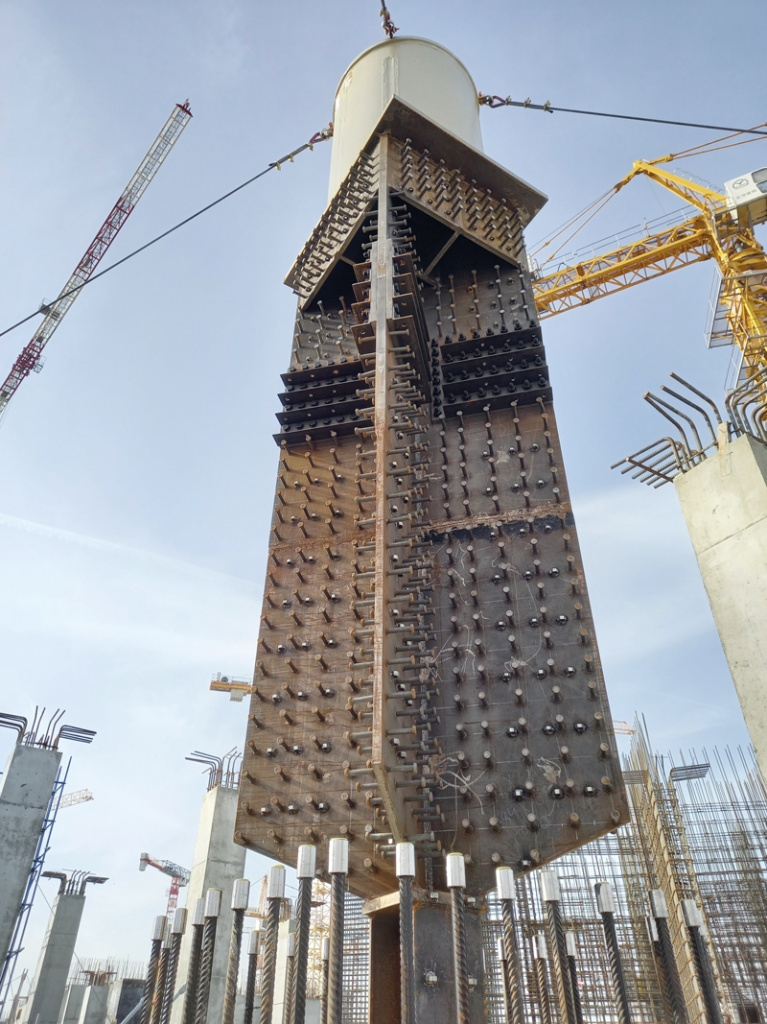
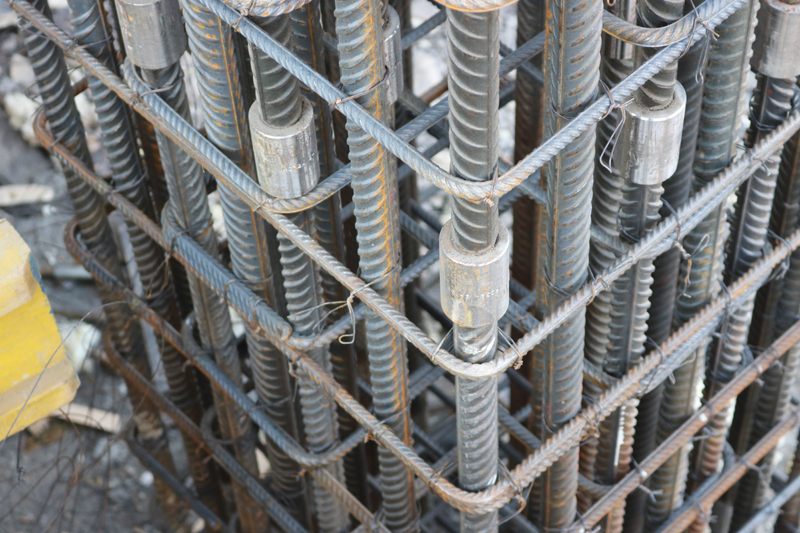
Concrete and curved steel connections are made with heavy-duty Rollcon threaded fittings.
We saw similar technologies at the construction of a nuclear power plant, and on such a scale at a civil facility, the use of beam-and-beam formwork (which also guarantees, by the way, the smoothest concrete) and other innovative technologies was last used at the Olympic construction sites in Sochi, although even there the amount of usable space was less than planned by Sberbank. In an amazing way, the Gorproekt design company, the namesake of our magazine, volunteered to help bring the ideas of Zaha Hadid to Russia as accurately as possible, the outstanding objects that we have covered more than once: from Moscow City and Lakhta in St. Petersburg to Akhmad Tower in Grozny. The head and founder of ZAO Gorproekt, Sergey Ilyich Lakhman, in an interview in 2012, complained that customers in Russia would turn to "green architecture" only under the influence of Western partners, and in the case of the Technopark, he finally got the opportunity to show the full range of capabilities of domestic engineers. For the general contractor, this experience is especially important, since with a large number of skyscrapers - there are not so many unique low-rise objects in his portfolio, and in fact, according to many urbanists, the vast domestic expanses were not created at all to imitate Manhattan, and you can create an impressive masterpiece of architecture even with limited height.
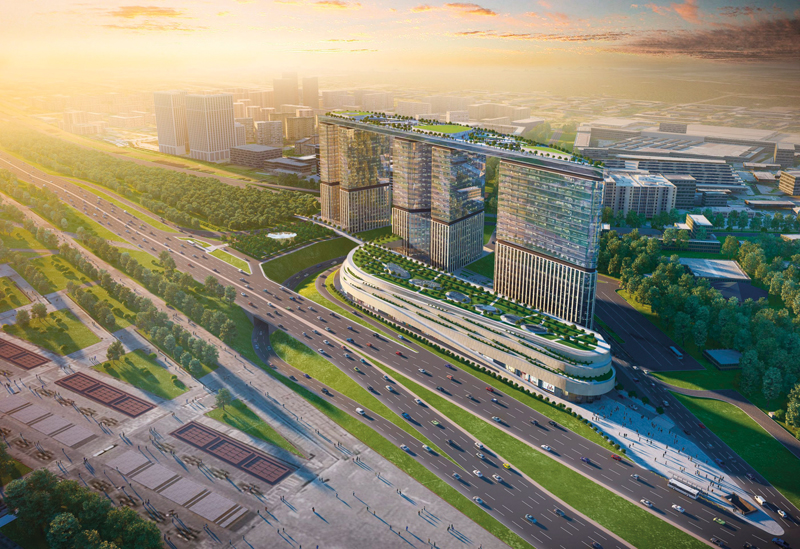
At the same time, Gorproekt is working on a transport interchange hub at Victory Park, which, repeating the famous roof of Marina Bay Sands in Singapore, also solves the problem of accurately “fitting” architecture into the landscape. And modern high-speed construction technologies make it possible to be sure that despite all the bad weather of 2020, we will be able to evaluate the result soon.
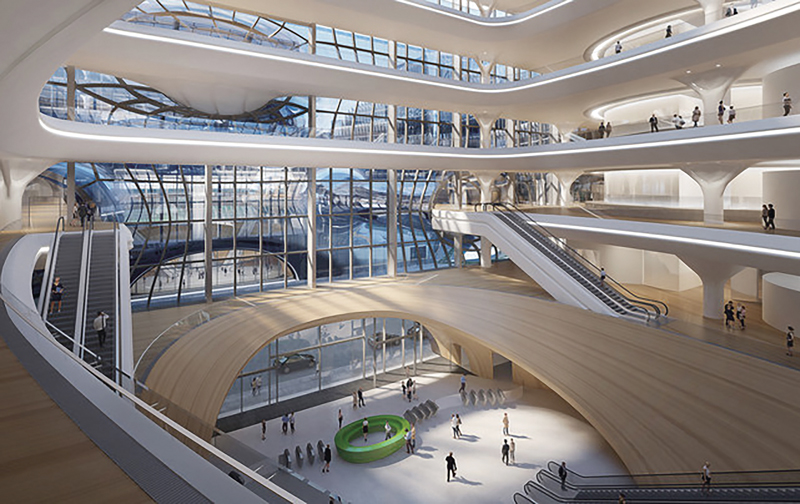
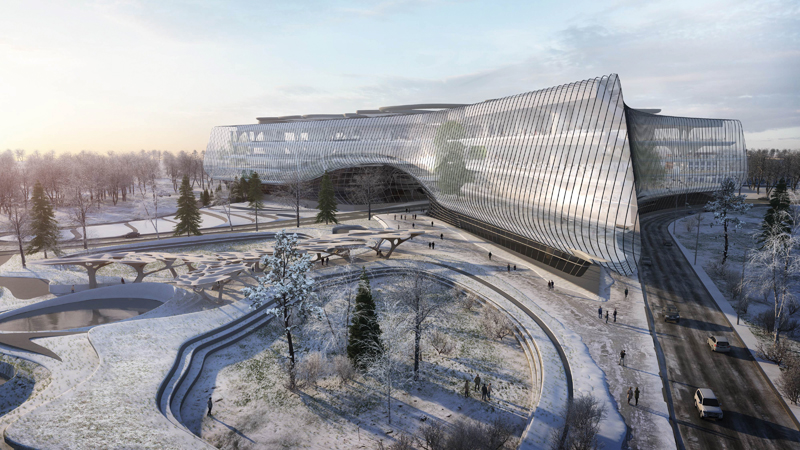
But back to Skolkovo. We are almost sure that Zaha Hadid's largest facility in Russia will become a place of pilgrimage, like the Guggenheim center in Bilbao, and a kind of creative "power point" of the entire Innopolis, a visiting card, and maybe something more. Society has long been aware that the success of creativity is facilitated by the special conditions of the environment - whether it be the hippie atmosphere of San Francisco or the almost resort architecture of Sophia Antipolis, the oldest technopolis in Europe, created on the Mediterranean coast next to Nice. It is no coincidence that Raphael in his fresco "The School of Athens" placed outstanding philosophers of all times, freely communicating in the luxurious interiors of the Renaissance palace - the most relevant type of architecture at that time. The history of science shows that the success of scientific and innovative activity depends not least on the quality of architecture, and perhaps Zaha Hadid's latest masterpiece will be able to curb and push even Russian entropy to progress.

 DOWNLOAD
DOWNLOAD LOOK
LOOK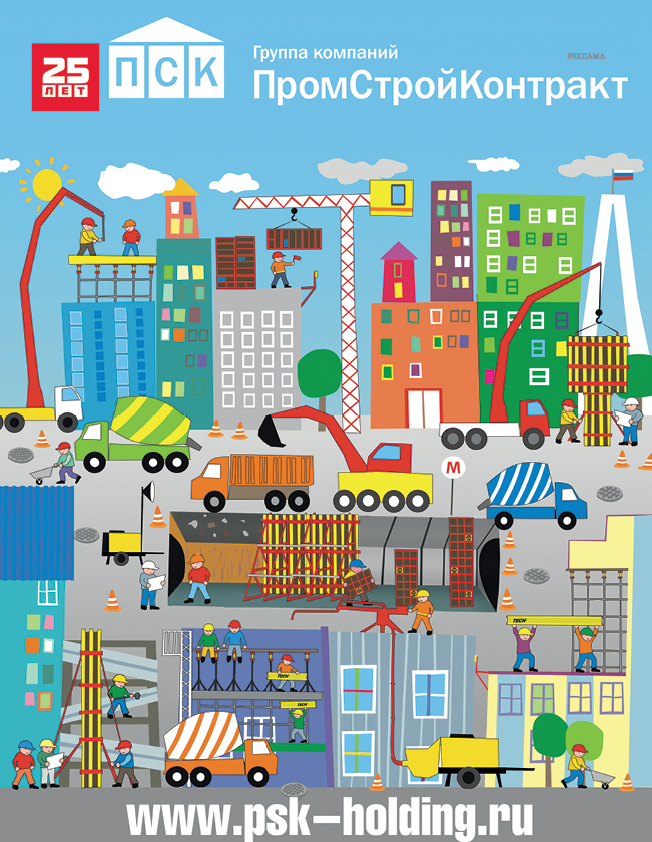
 Top Content of the Month
Top Content of the Month